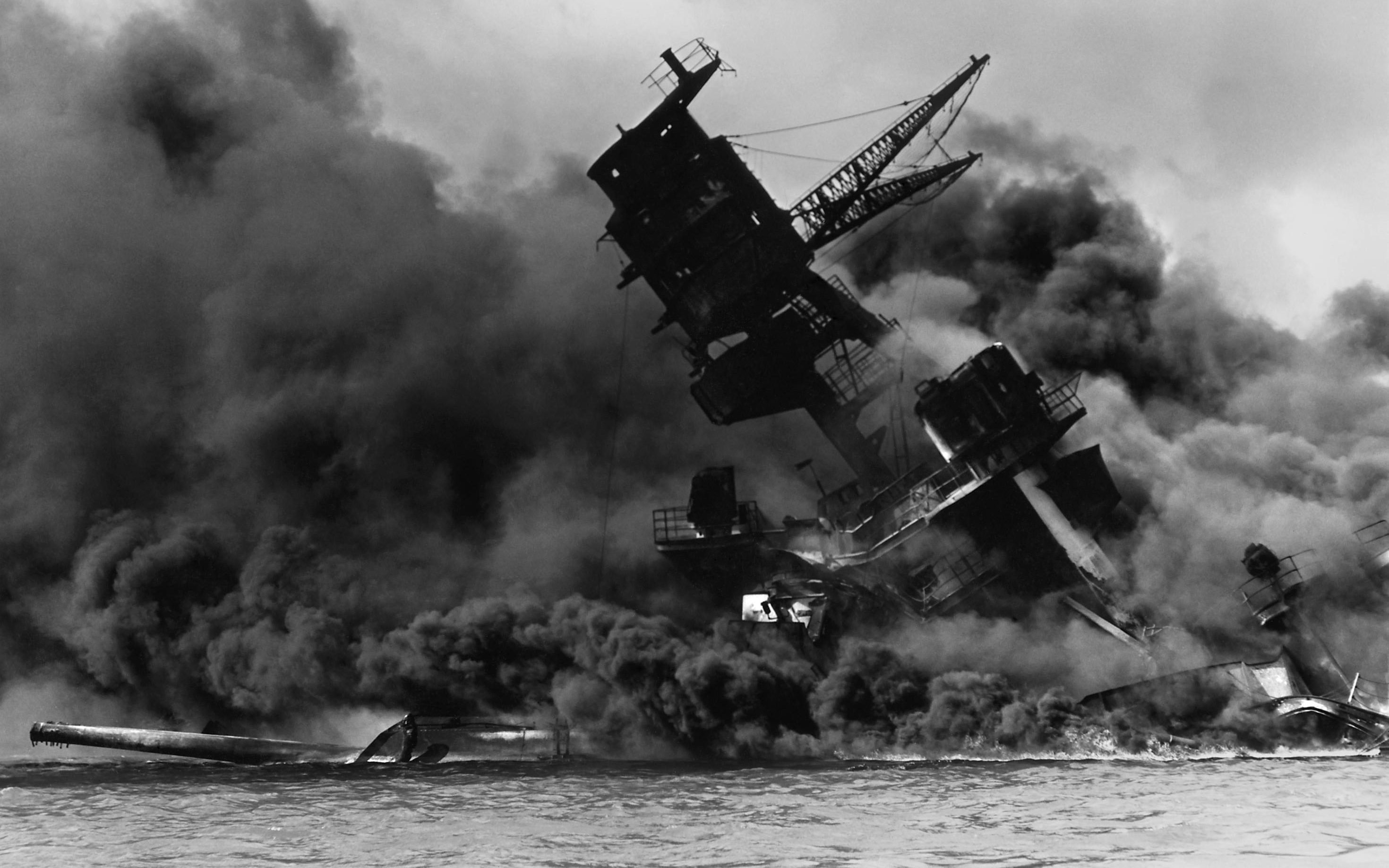7 December: Today in U.S. military history
Today’s post is in honor of Spc. Micah S. Gifford, who on this day in 2006 was killed by an improvised explosive device attack in Baghdad. The 27-year-old native of Redding, Calif. was assigned to the 3rd Battalion, 509th Infantry Regiment (Airborne), 4th Brigade Combat Team, 25th Infantry Division.
1917: Four U.S. battleships, USS Delaware (BB-28), USS Florida (BB-30), USS New York (BB-34), and USS Wyoming (BB-32) arrive in British waters and join the British Grand Fleet for service during World War I. That same day, the United States declares war on Austria-Hungary.
1941: At 3:57 a.m., the minesweeper USS Condor spots a periscope at the entrance to Pearl Harbor. The ship signals the nearby destroyer USS Ward, whose crew begins searching for the unidentified vessel. At 6:37 a.m., Ward spots the periscope as a two-man Japanese mini-sub attempts to follow a U.S. cargo ship into the harbor and sinks the enemy warship – the first U.S. shots of World War II.
Having achieved total tactical and strategic surprise, Vice Adm. Chuichi Nagumo’s 1st Air Fleet begins their attack on Pearl Harbor. The strike is conducted in two waves: The first wave of 183 enemy aircraft strikes just before 8:00 a.m. The second wave of 170 planes hits a little after 8:30 a.m. Of the ships anchored at Pearl Harbor, five of the eight battleships, three destroyers, and seven other ships were either sunk or severely damaged. By day’s end, 2,718 American sailors, 582 soldiers (including Army Air Forces personnel), 178 Marines, and 103 civilians will be dead, dying or wounded. Japanese losses were minimal: 30 planes, five mini-subs, 65 killed, and one Japanese sailor captured. All but two of the battleships – Arizona and Oklahoma – are raised to fight again. Fifteen sailors earned the Medal of Honor during the attack, and their citations can be read here.
Meanwhile, Japanese forces bomb Guam and Wake as destroyers and planes attack Midway. Other Japanese targets include Shanghai, Hong Kong, the Philippines, Thailand, Malaya, and the Dutch East Indies.
1942: USS New Jersey (BB-62), one of the world’s largest battleships ever built, is launched. The “Big J” will serve a total of 21 years in the active fleet, seeing action in World War II, Korea, and Vietnam. In 1982 the Iowa-class battleship will be put to sea once again after being modified to carry Tomahawk cruise missiles, and is decommissioned for the last time in 1991.
1943: At the Bernhardt defensive line in Italy, Lt. Gen. Mark Clark’s Fifth Army secures the Mignano Gap.
1944: Patton’s Third Army crosses the Siegfried Line at Saarlautern. In the Pacific, the 77th Infantry Division lands at Ormoc in the Philippines as one of the escort destroyers, USS Ward (yes, the same ship that sunk the midget submarine three years ago at Pearl Harbor), is sunk by kamikaze attacks. Nearby, the destroyer USS Mahan (DD-364) is also sunk by kamikaze attacks.

1950: Air Force cargo planes drop eight “Treadway” bridge spans in the Funchilin Pass, enabling the First Marine Division to cross the most difficult natural obstacle on their breakout of the Chosin Reservoir.
1952: U.S. Air Force F-86 Saber pilots shoot down seven of 32 enemy aircraft – the highest tally of the Korean War.
1959: America’s first operational ballistic missile, the PGM-17 Thor, is successfully launched at Cape Canaveral, Fla.
1972: Apollo 17 launches for NASA’s final lunar mission. Aboard are two U.S. Navy captains: Eugene A. Cernan and Ronald E. Evans, and Harrison H. Schmitt – a civilian geologist.

The USS New Jersey was not the largest battleship ever built. It was the largest US Battleship.
The two Imperial Japanese dreadnaughts, Musashi and Yamato were about 20,000 tons heavier than the Iowa class (65k tons vs 45 K tons, respectively). Also, the Japanese ships carried nine 18.1 in main guns compared to the Iowa Class’ nine 16 inch guns.
Go here for an interesting comparison: https://nationalinterest.org/blog/the-buzz/the-ultimate-battleship-battle-japans-yamato-vs-americas-13737